A FEW FUNGI
6/28/20
Learning fungi seems daunting, but even so, it’s hard not to notice some of the more obvious ones. Here are a few from this spring. Some are from our neighborhood, and many are from the UGA Botanical Gardens. Luckily, Mary Woehrel and William Light have written a great book specifically on the fungi of the area, Mushrooms of the Georgia Piedmont & Southern Appalachians.
American Caesar (Amanita (sect. Caesaeae) jacksonii). This strikingly handsome mushroom was growing in our neighborhood. Notice how the cup turns up at its edges, how the gills are visible from the upper surface, and how the gills almost reach to the stem underneath (that is, they are free). The skirt (technically called a veil) around the stipe (stem) is a common feature of the amanitas. Young ones can be strikingly red-orange and glossy; note the white remnants of the volva at the base of the stipe.
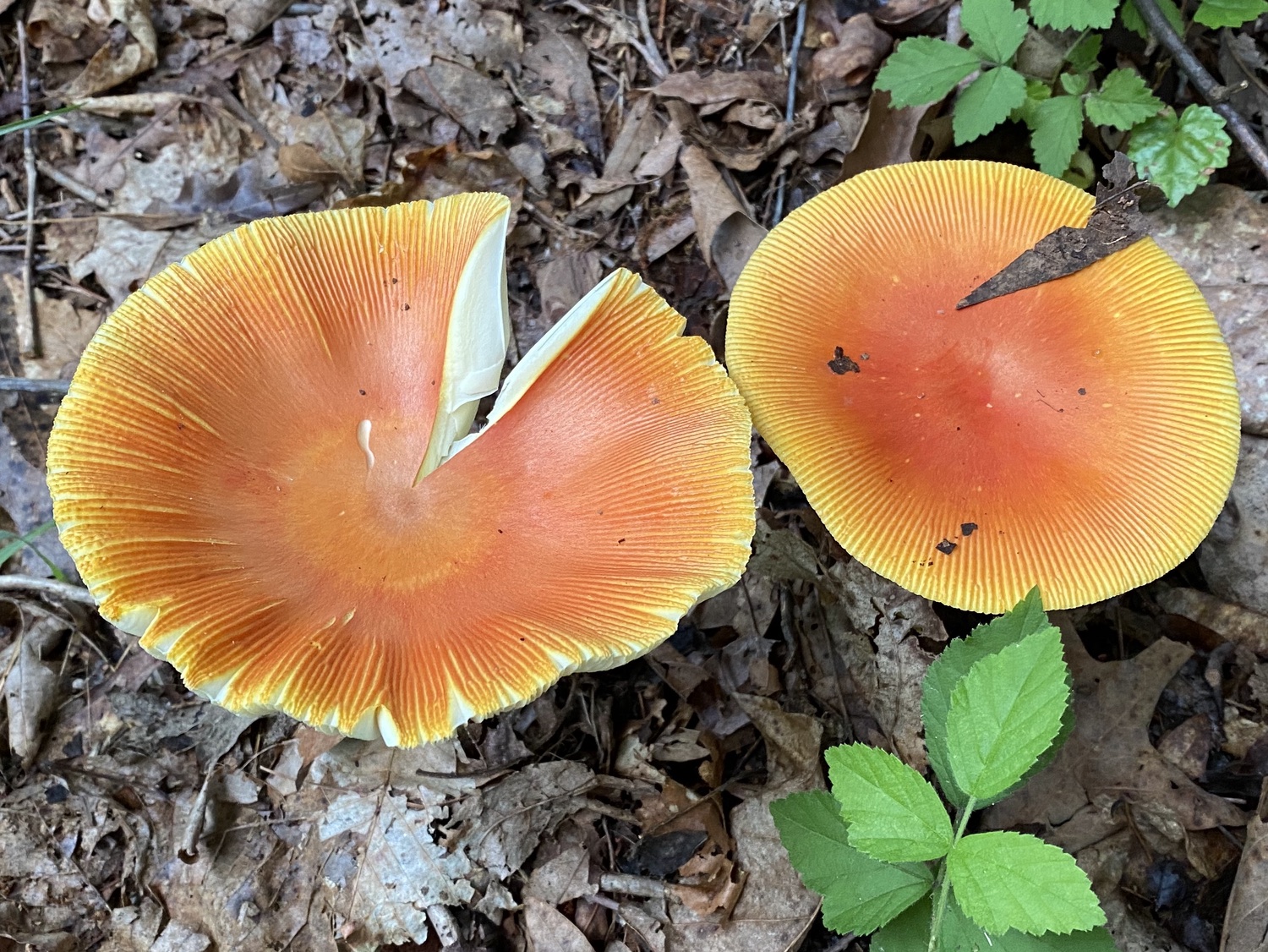
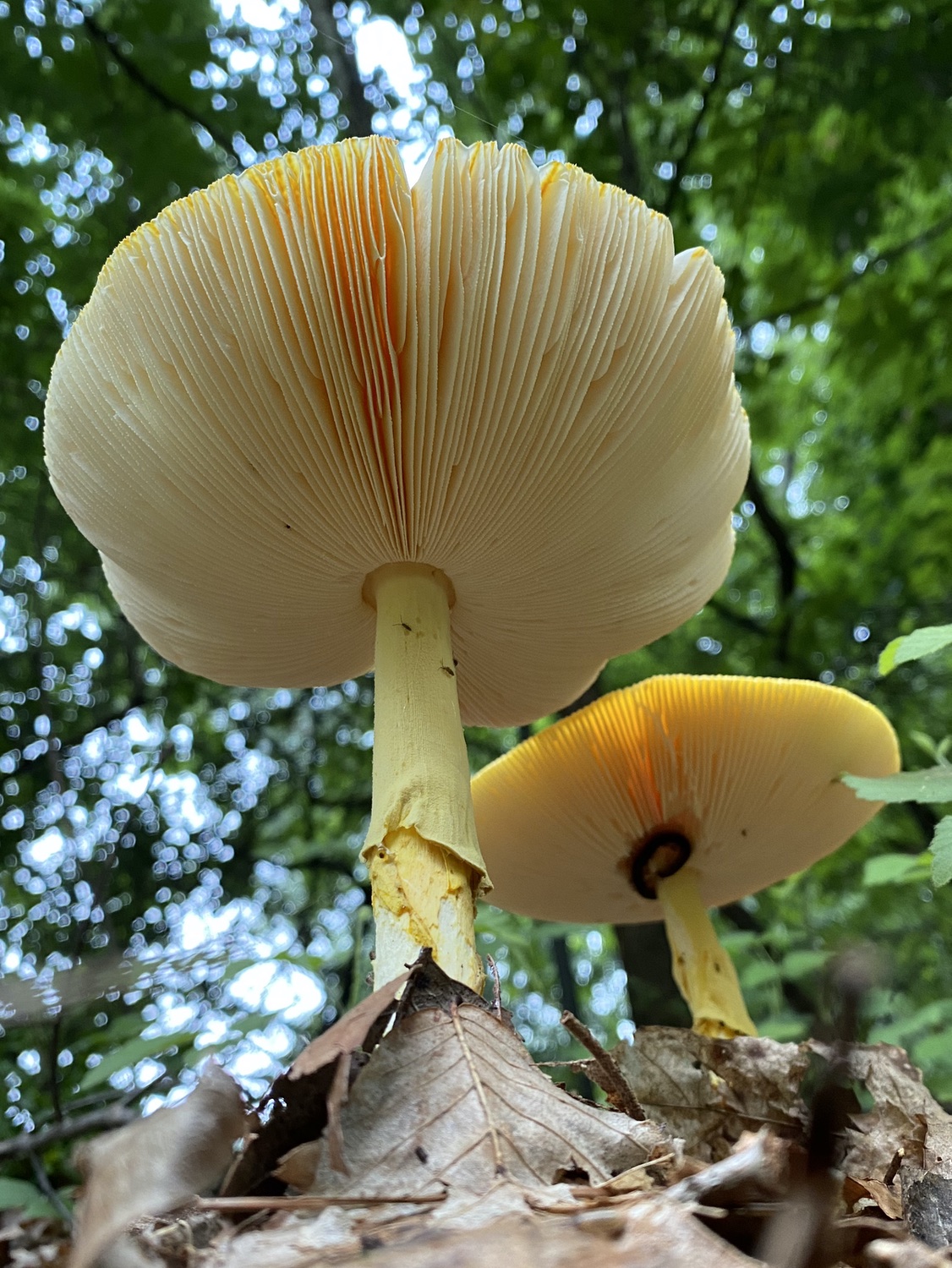
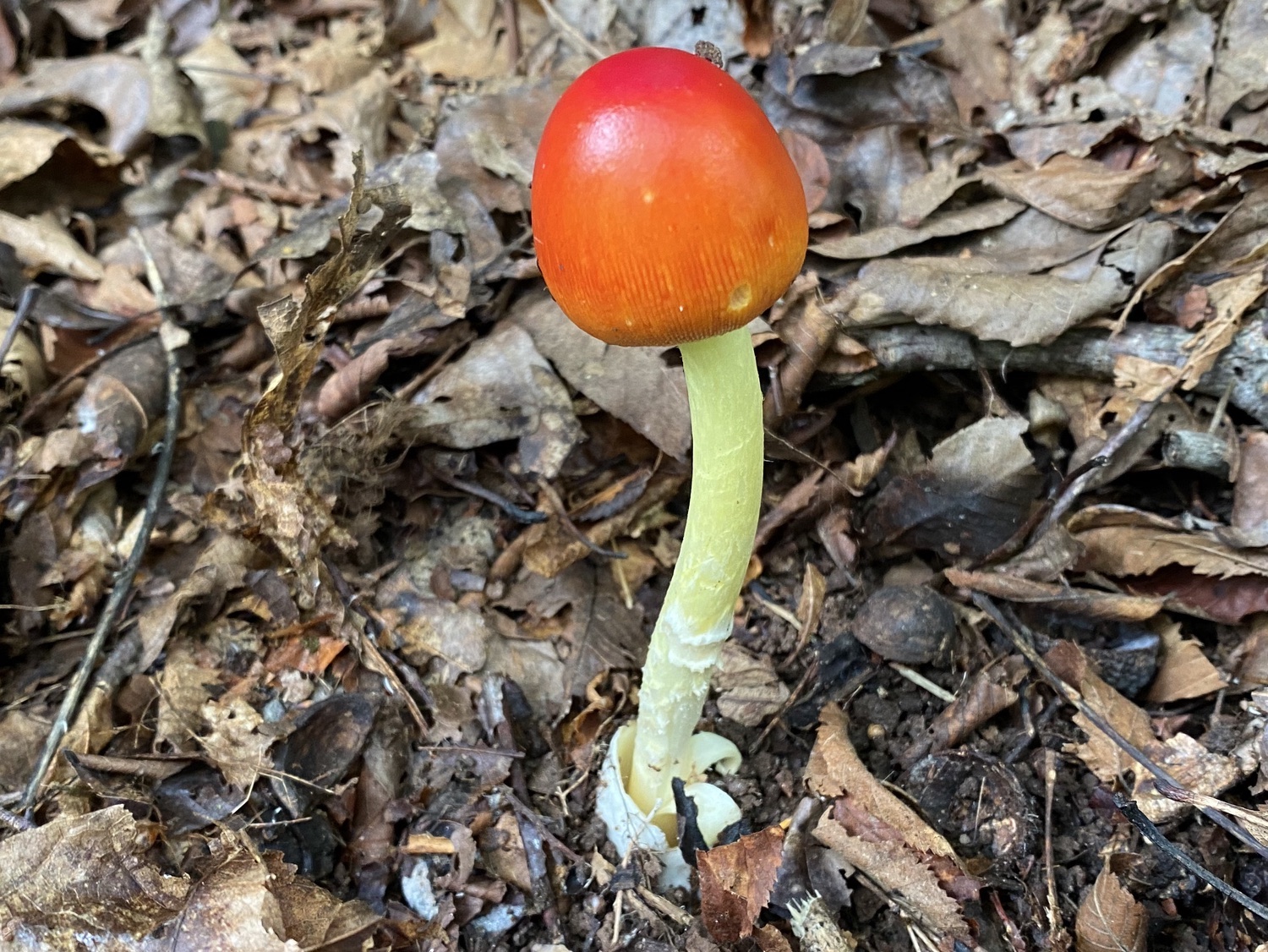
Grisette (Amanita (sect. Vaginatae) vaginata). Another Amanita, the caps of these are characteristically flat, with a long and narrow stem that tapers towards the top. The cap is quite delicate, with well-developed free gills.
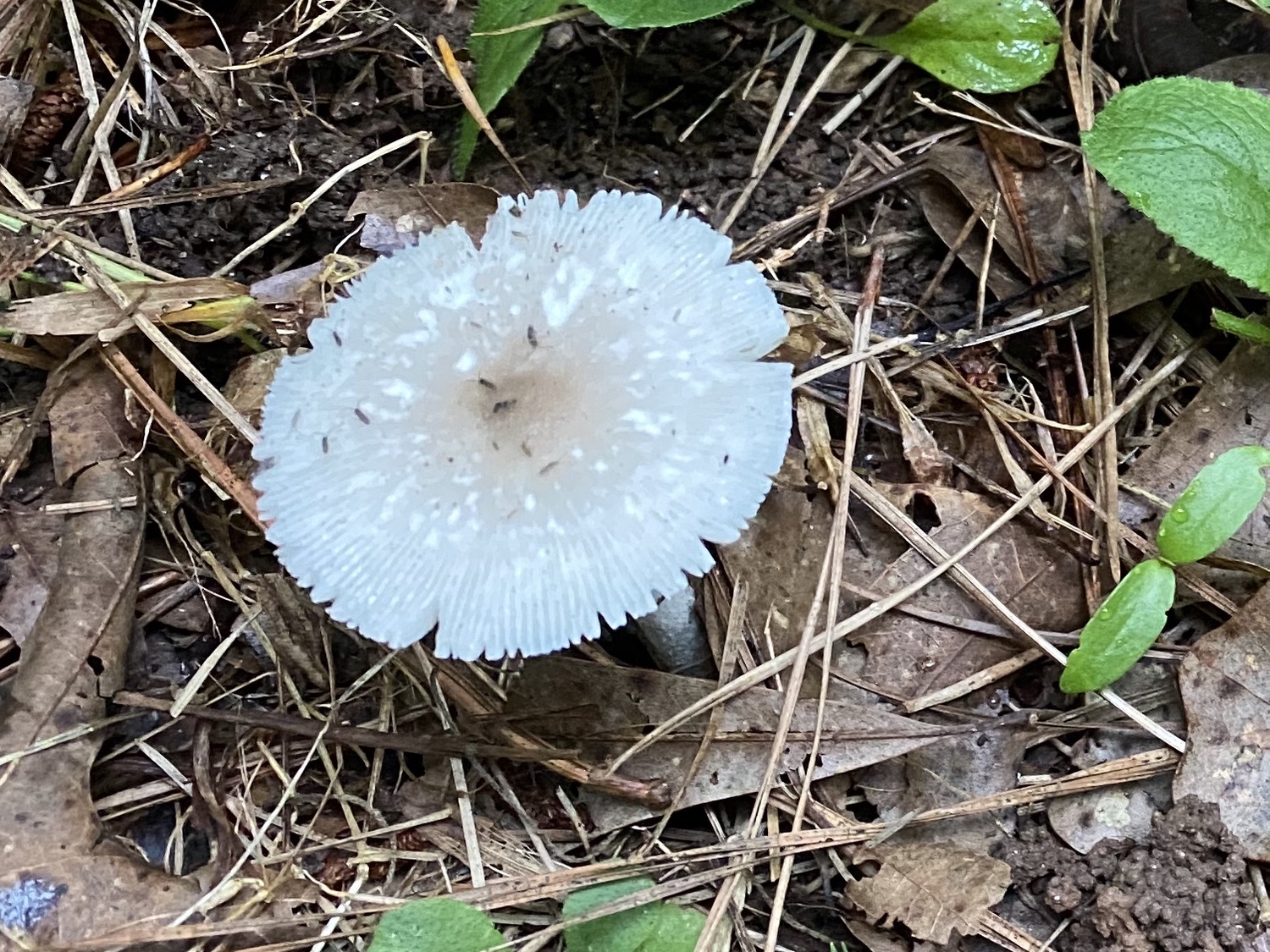
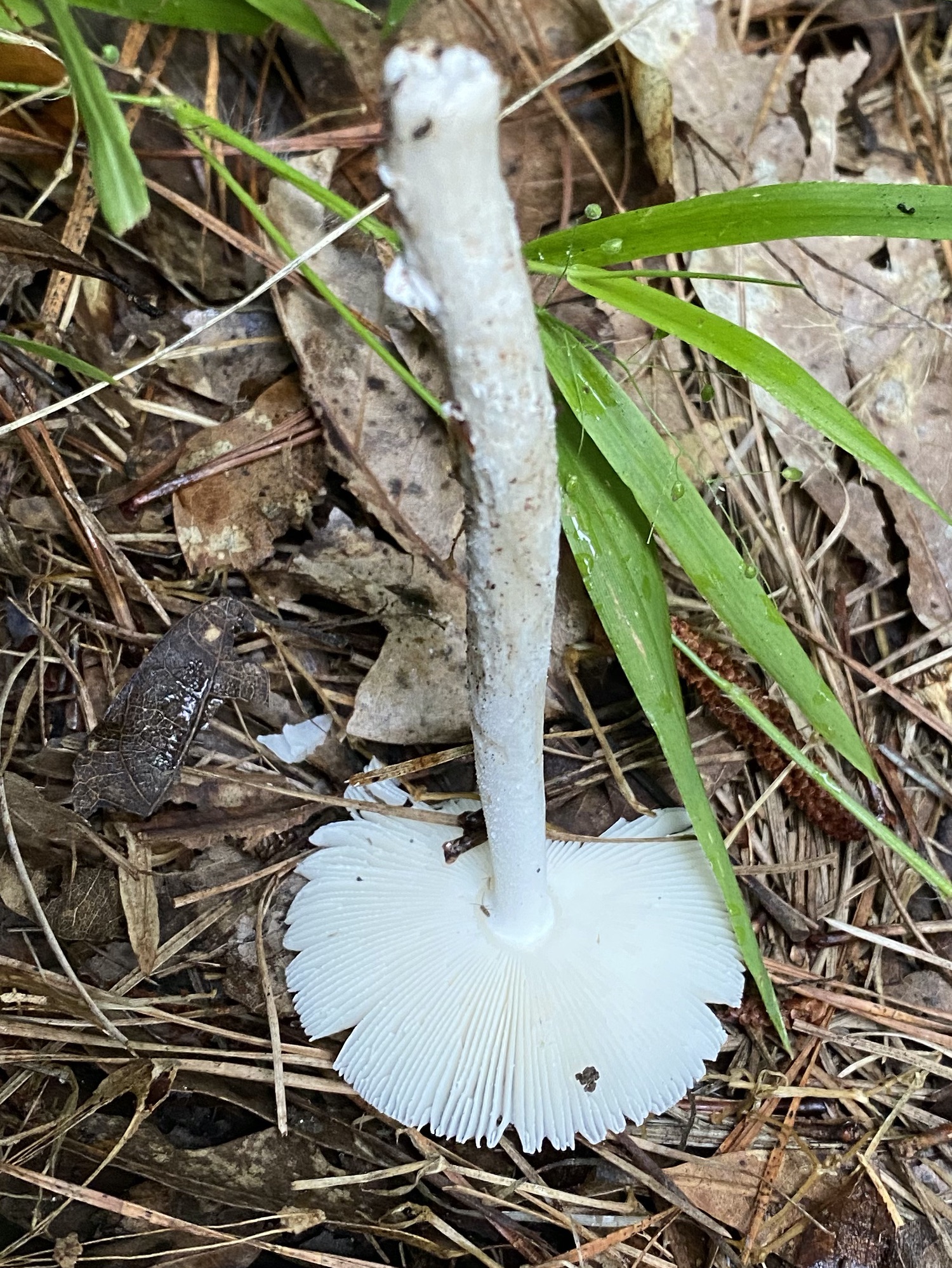
Oyster Mushroom (Pleurotus pulmonarius). These form dense groups of soft, shingling masses on dead logs. It is typically found in the summer after a rainy period. Note the coarse, wavy gills underneath. There is a similar-looking species (Pleurotus ostreatus) that can grow living trees and is more typically a late fall and winter species. Although they grow on wood, they actually consume nematodes (a microscopic worm).
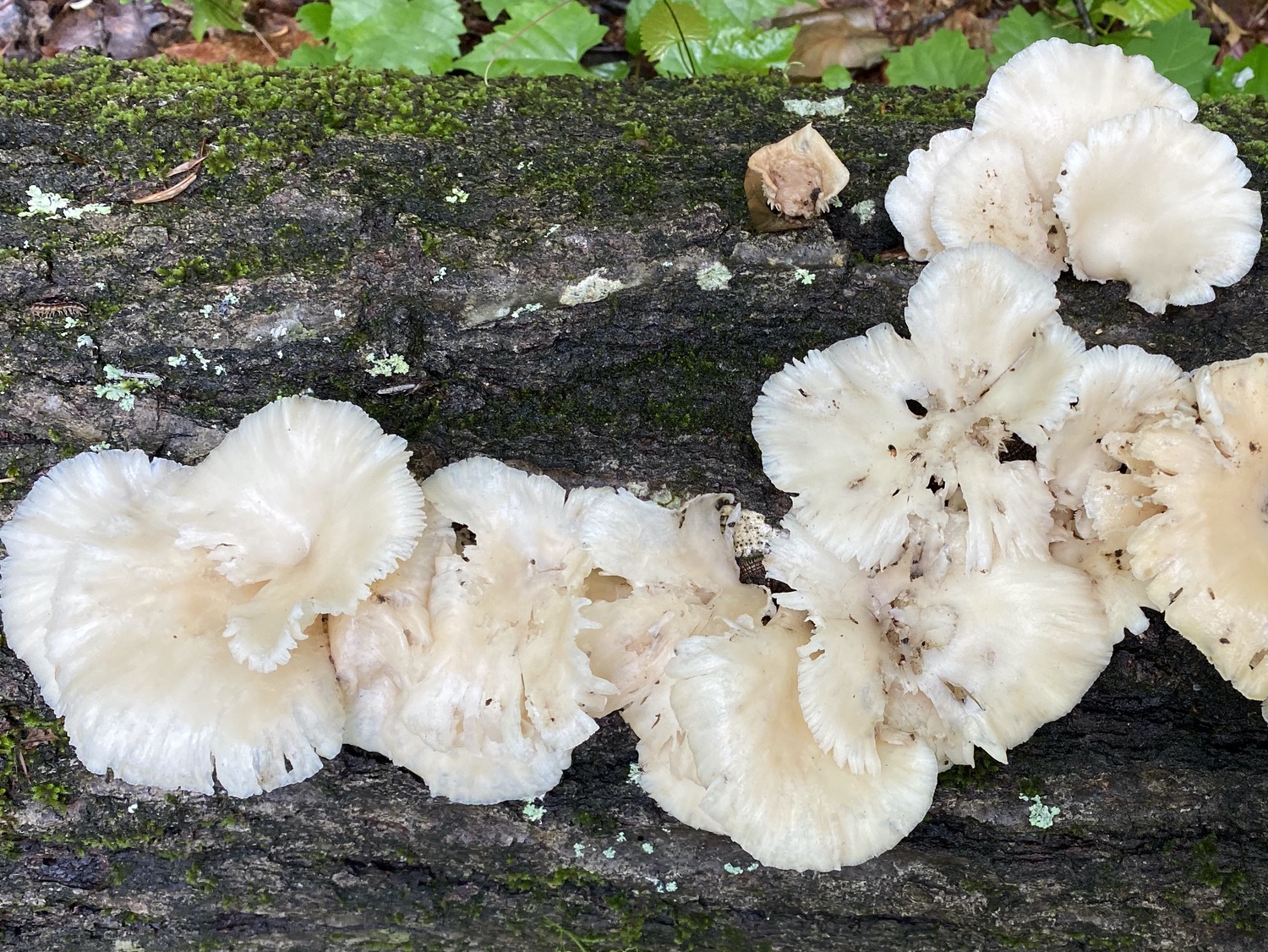
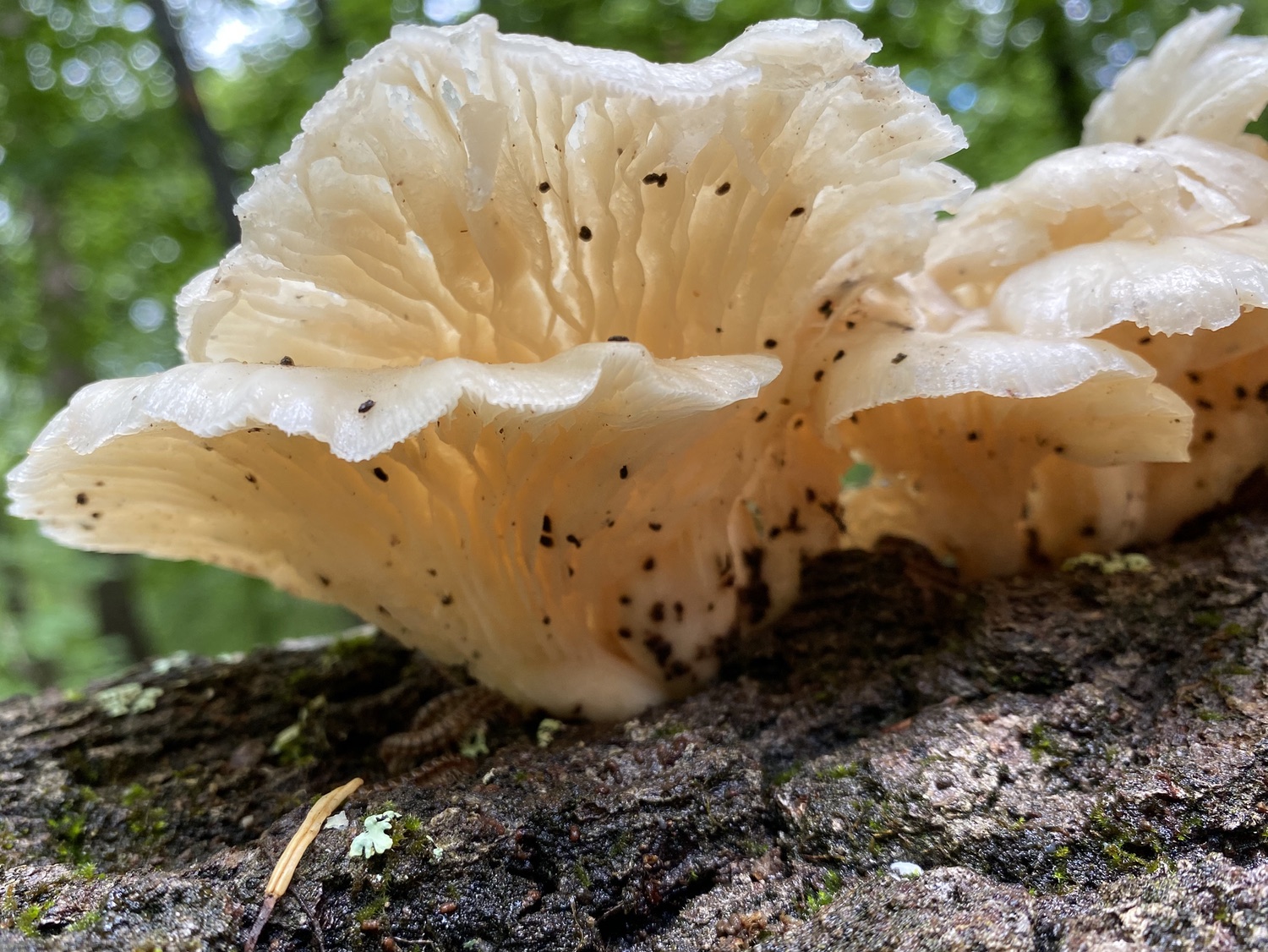
Turkey Tail (Trametes versicolor). These strikingly colored fungi can form dense clusters on decaying hardwood trees. Although I’ve not yet photographed the undersides, they are densely covered with pores (being members of the Polypore group of fungi).
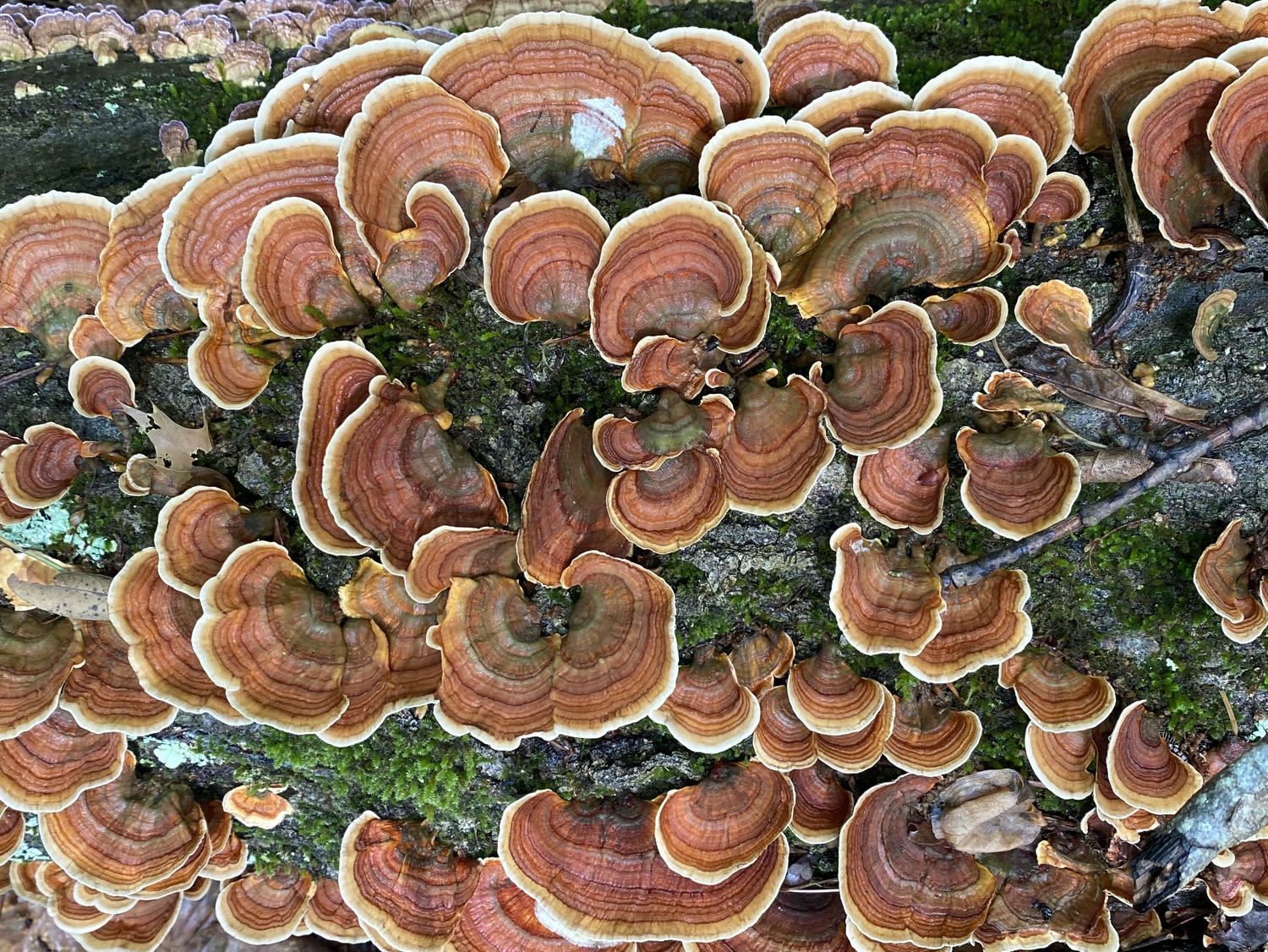
Chanterelle (Cantharellus cibarius). Woehrel and Light say these can be pale yellow, to yellow, to orange, but I’ve only seen the orange ones. Note how the edges of the cap are upturned, even funnel-shaped, as well as the wavy edges to the cap, and the decurrent gill-like ridges (that run from under the cap partway down the stem). They are widespread in the UGA Botanical Gardens, in our neighborhood, and even in our yard.

Fleecy Milkcap (Lactifluus subvellereus). These are very common all through the UGA Botanical Gardens right now, and hard to miss: their white caps are 3–4" across. Notice how the cap is depressed in the middle, as well as the widely spaced decurrent gills. Apparently, these release a white latex when cut, something I’ll have to try next time I see one.
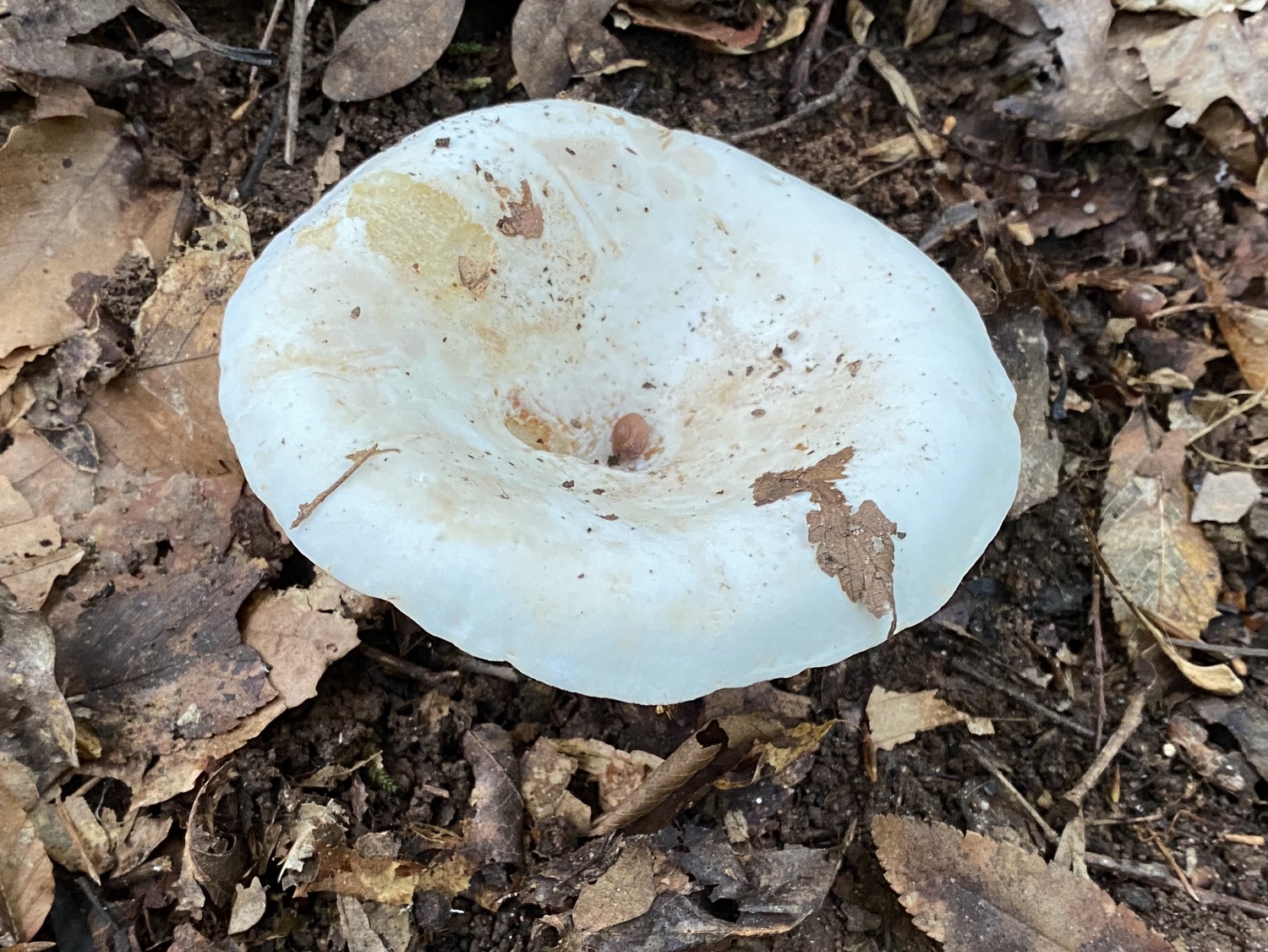
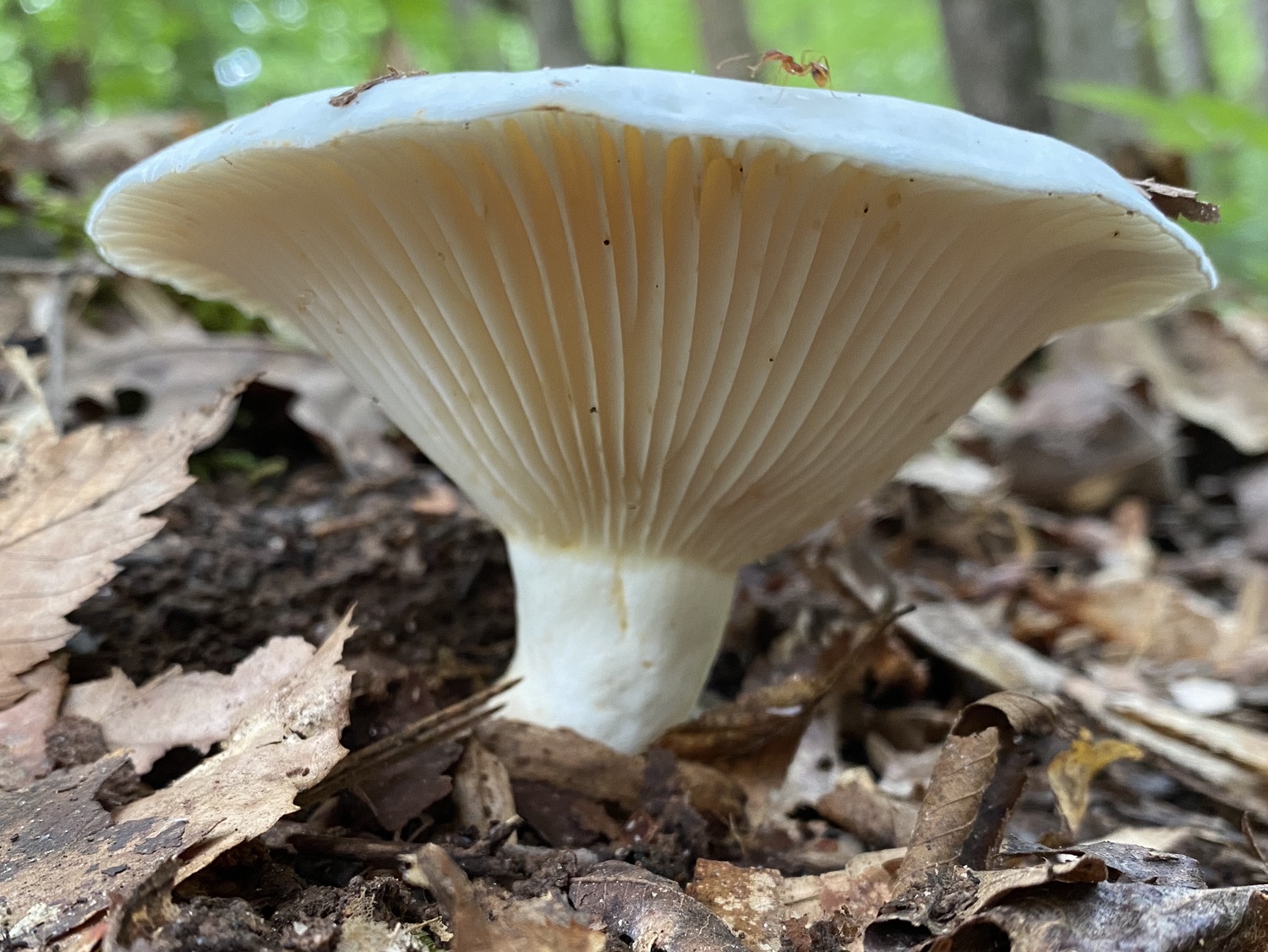
Ruby Bolete (Hortiboletus rubellus, formerly called Boletus rubellus, as in Woehrel and Light). I saw only two of these in the UGA Botanical Gardens, growing in a gravel road in an oak forest. The cap is red, convex, rather dry looking, with a light-colored rim. The underside of the cap is porous and spongy looking, as is typical of the boletes. The stem grades from yellow at the top to red near its base.
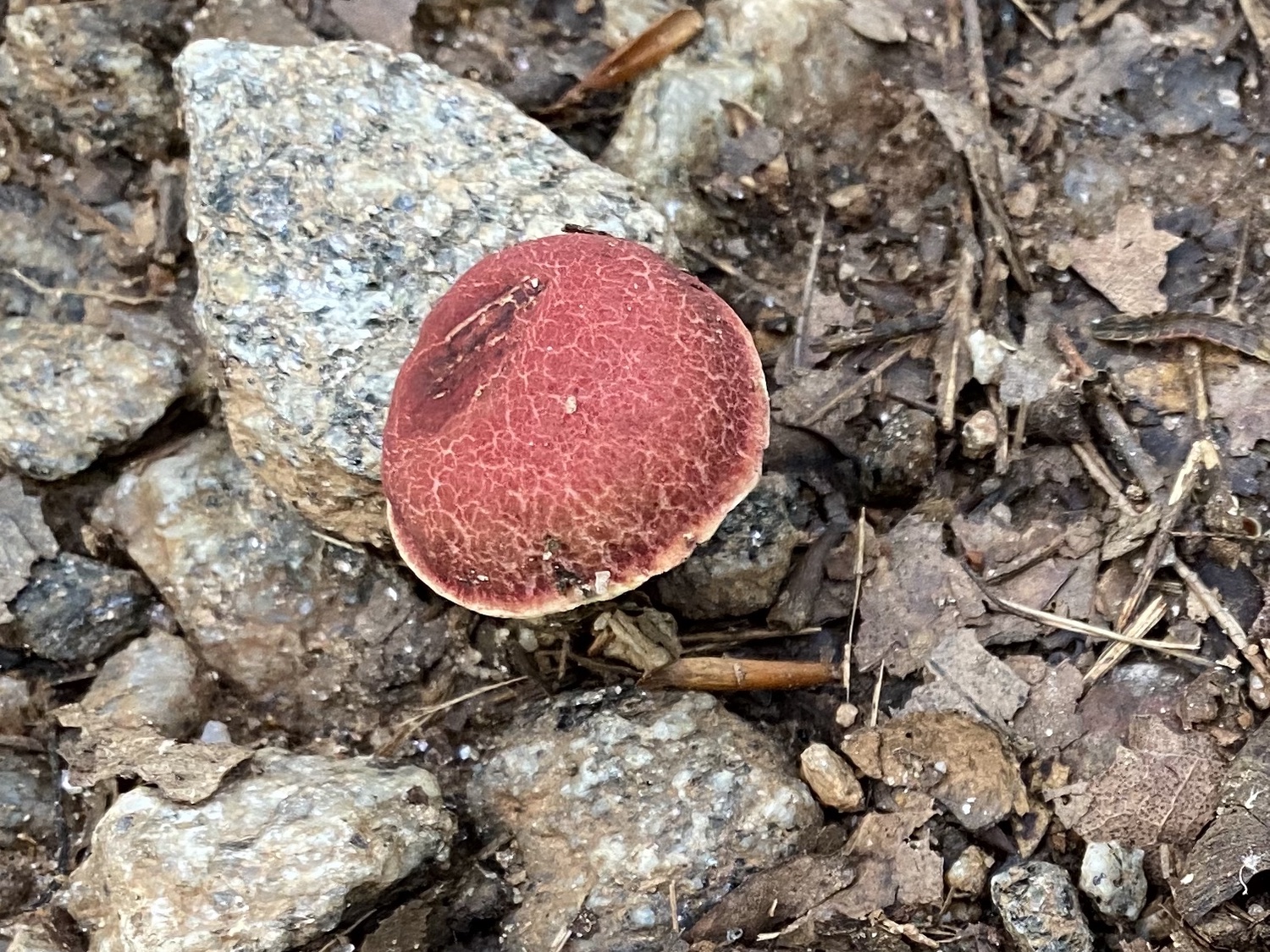
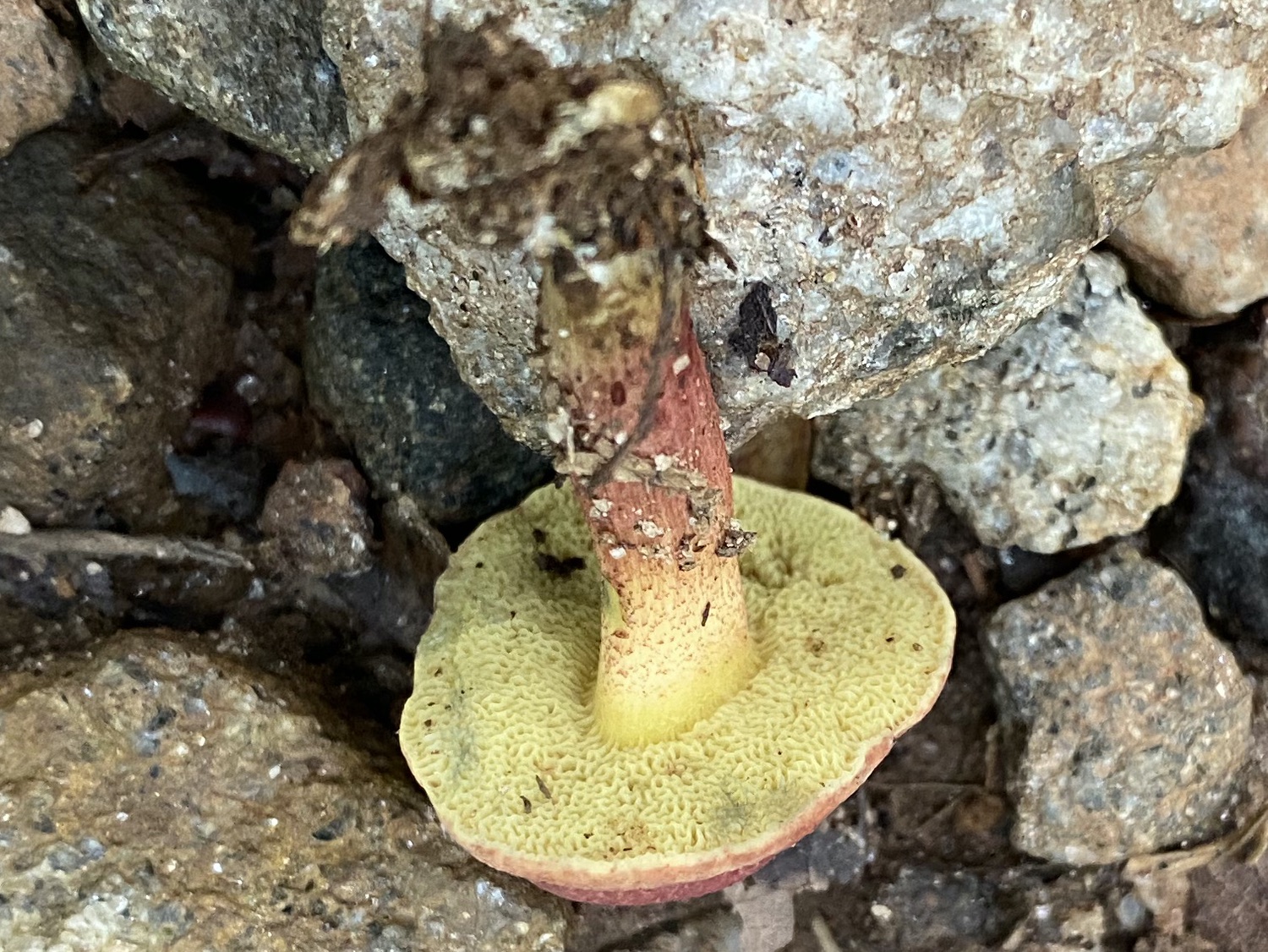
Rooted Collybia (Hymenopellis sinapicolor, also called Rooted Agaric). The cap is yellowish, wrinkled, slick, less than 2" across, with a small raised point in the center. The cap turns brown with age, but stays wet-looking; I assume this is an older one, as it was less than a foot away from the yellow one. The stem is markedly narrow and long. The underside has nicely formed adnexed (not sure) white gills that frequently split. This genus apparently has a long root, but I couldn’t verify that as I usually try not to disturb fungi when I find them.
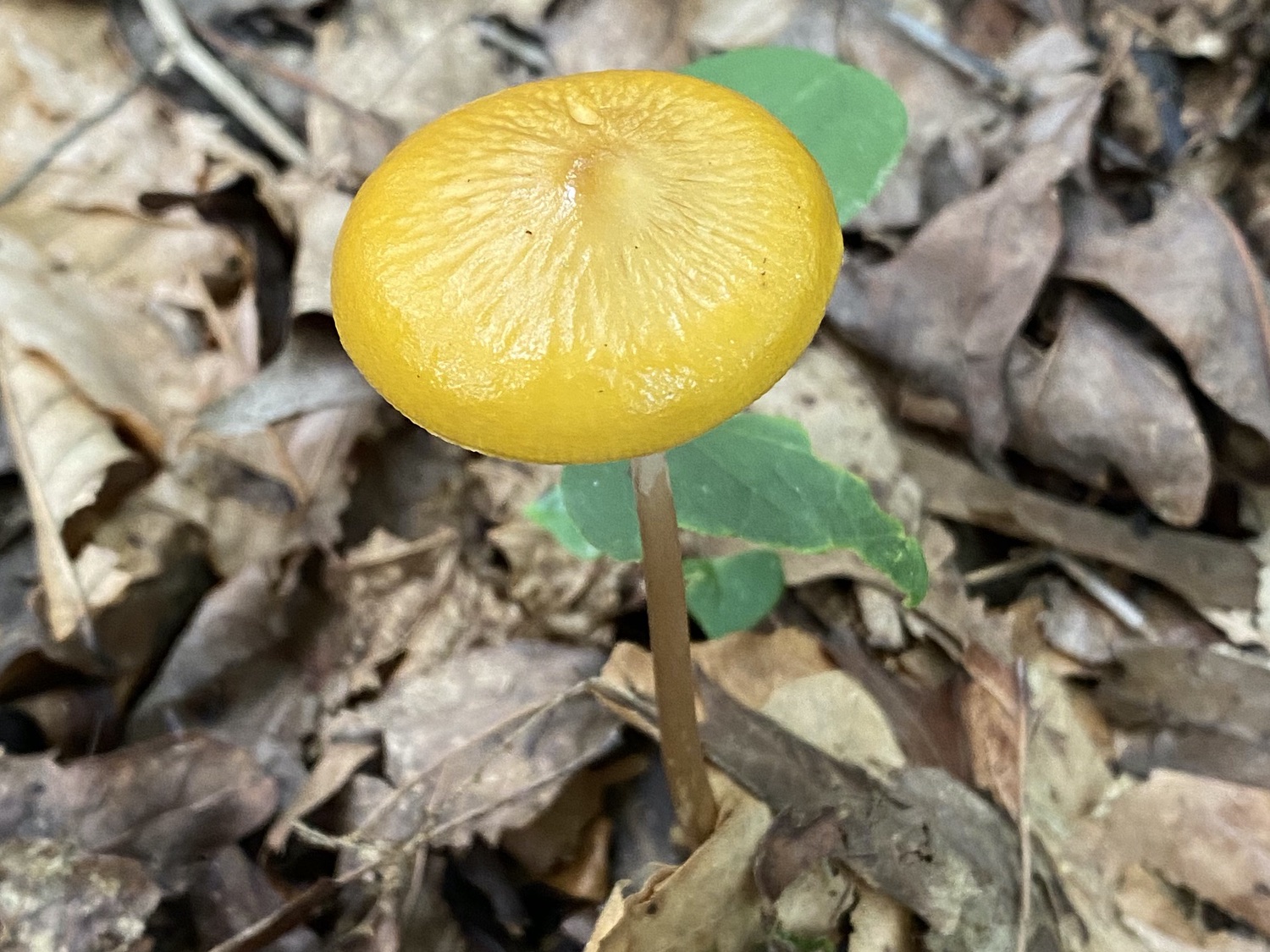
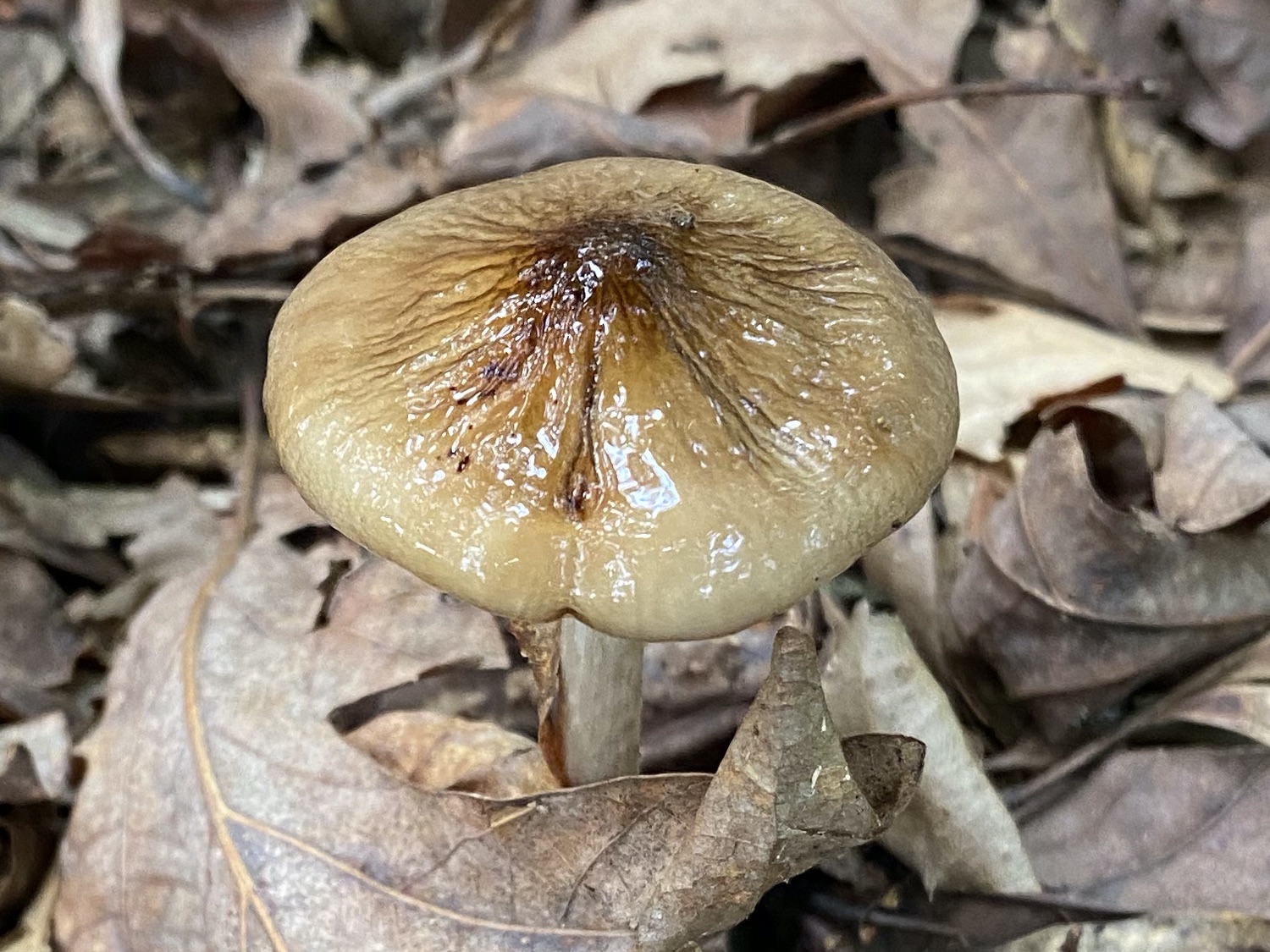
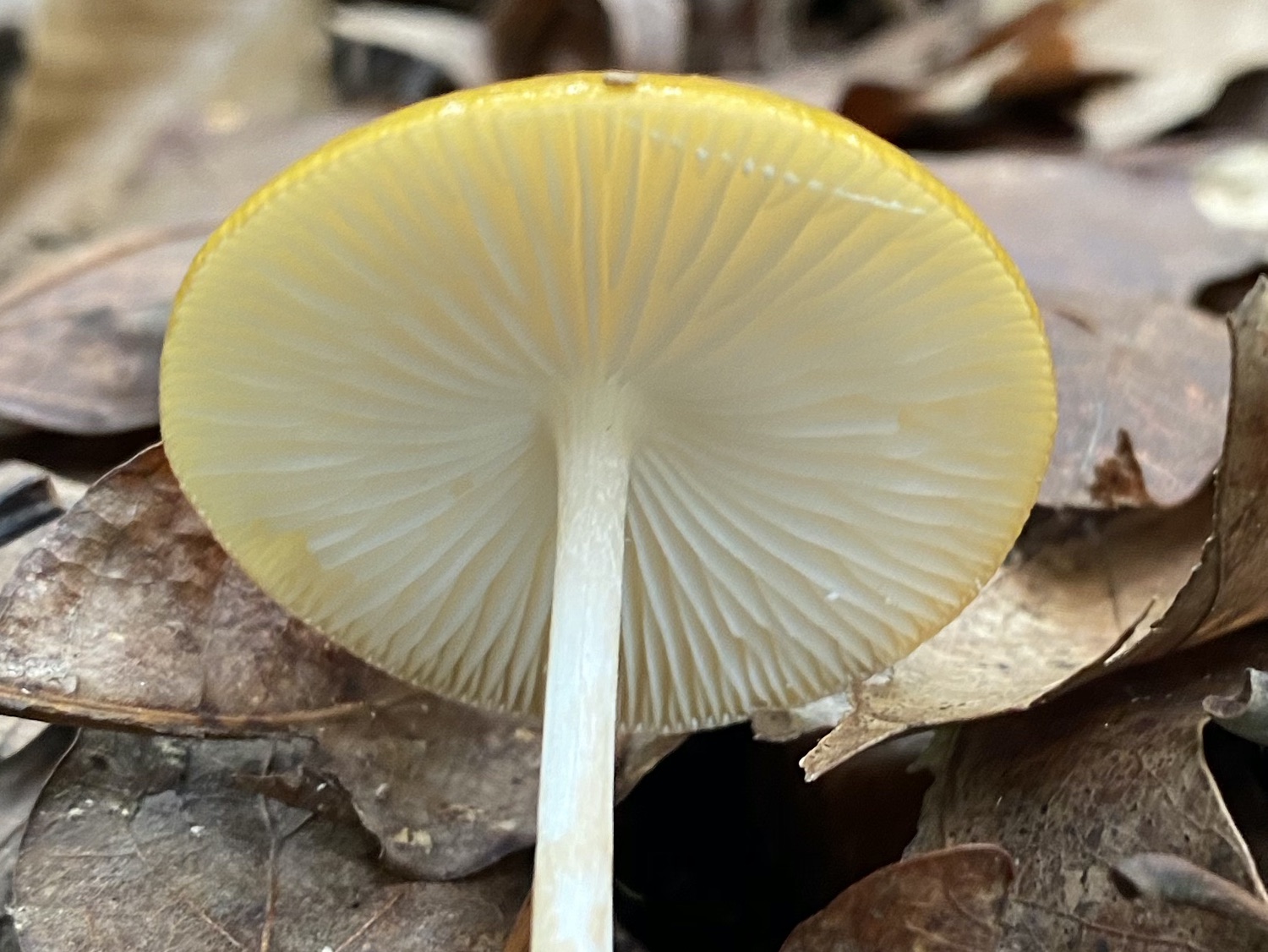
Slime Molds
These next two are interesting. Although they are commonly treated as a fungi, they aren’t, they are a type of protist called a slime mold. Moreover, slime molds are actually several different types of unrelated organisms. Slime molds exist for most of their life as microscopic single-celled organisms, but when food is in short supply, they congregate into the masses that we can see.
Dog Vomit Slime (Fuligo septica). These form yellow to white, sometimes pink, slimy-looking masses on rotting wood, mulch, and wood chips. Notice the snail in the middle of the second image; I’m not sure who is eating whom.
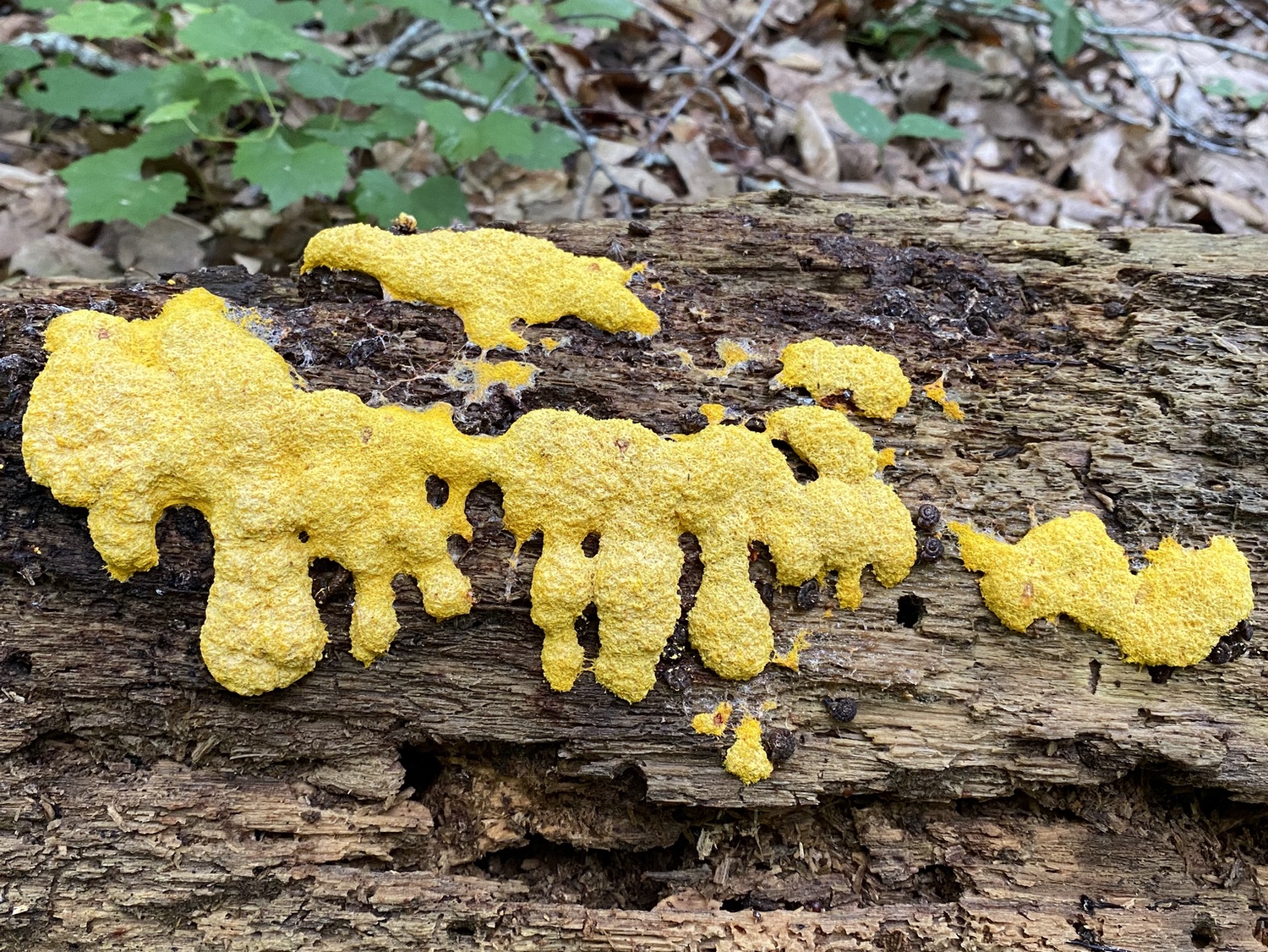
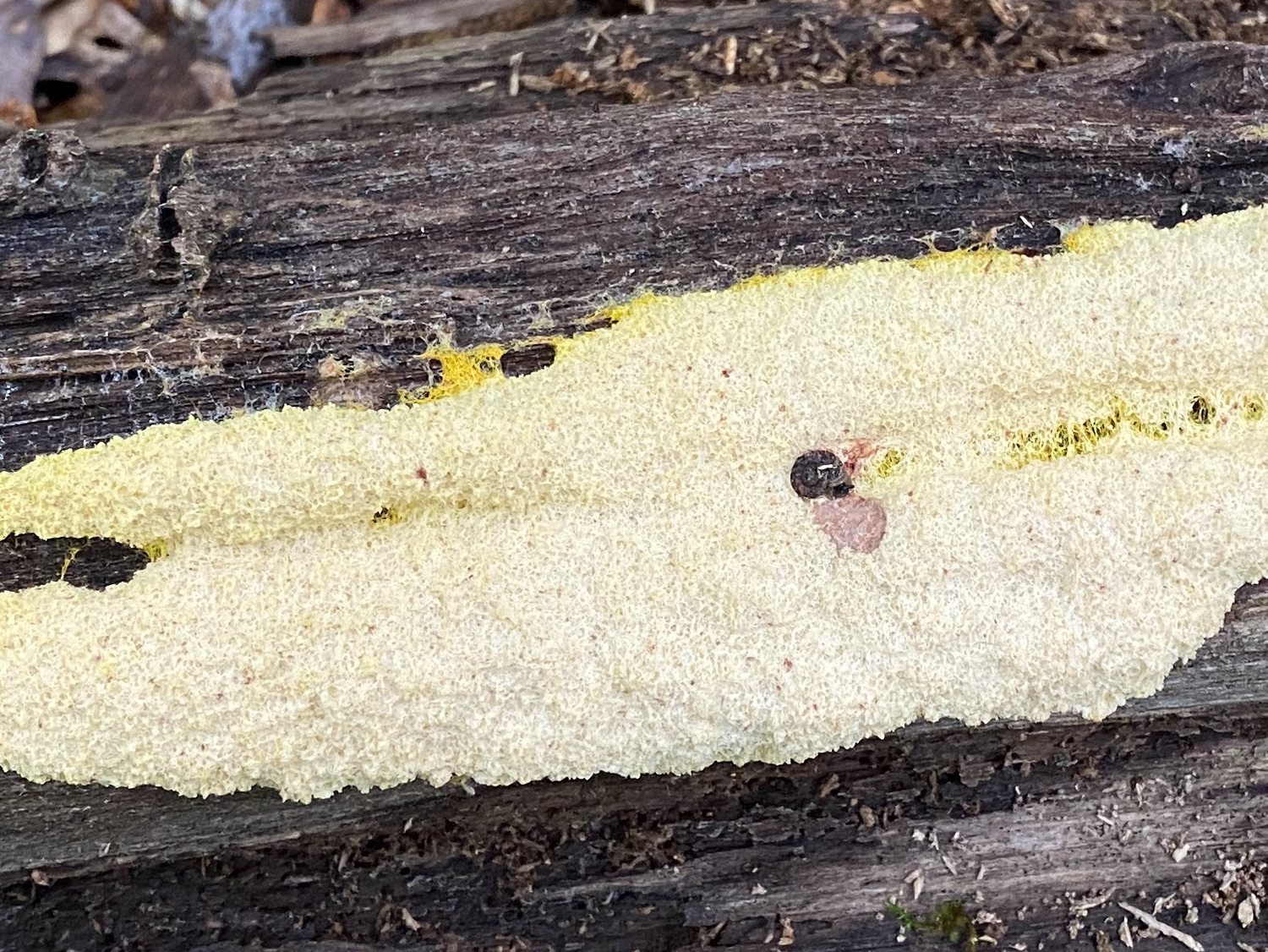
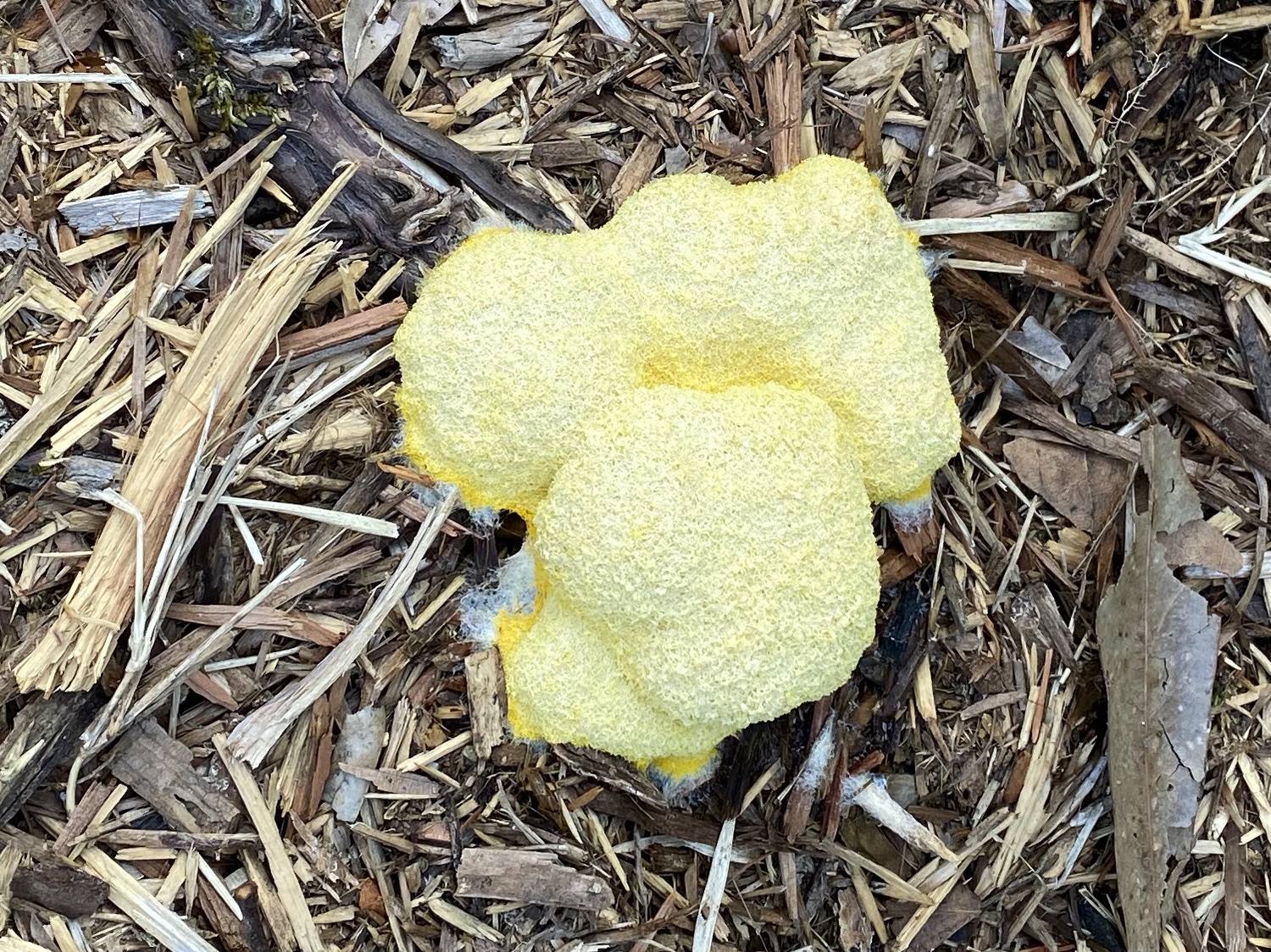
Coral Slime (Ceratiomyxa fruticulosa var. porioides). This grows on dead and rotting wood. From a distance, it looks like a white smear, but up close, it is composed of tiny, thin, tubular branches.
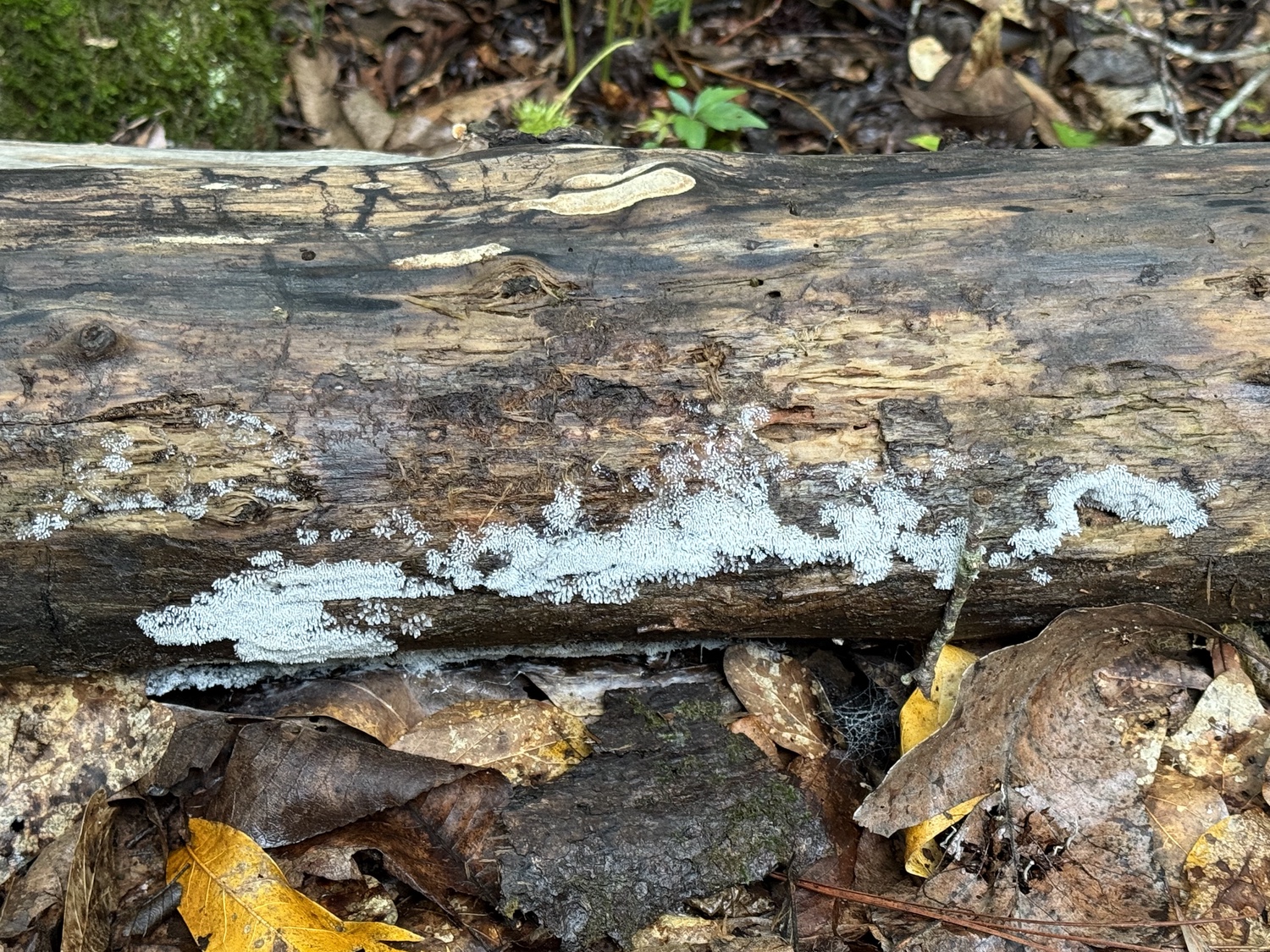
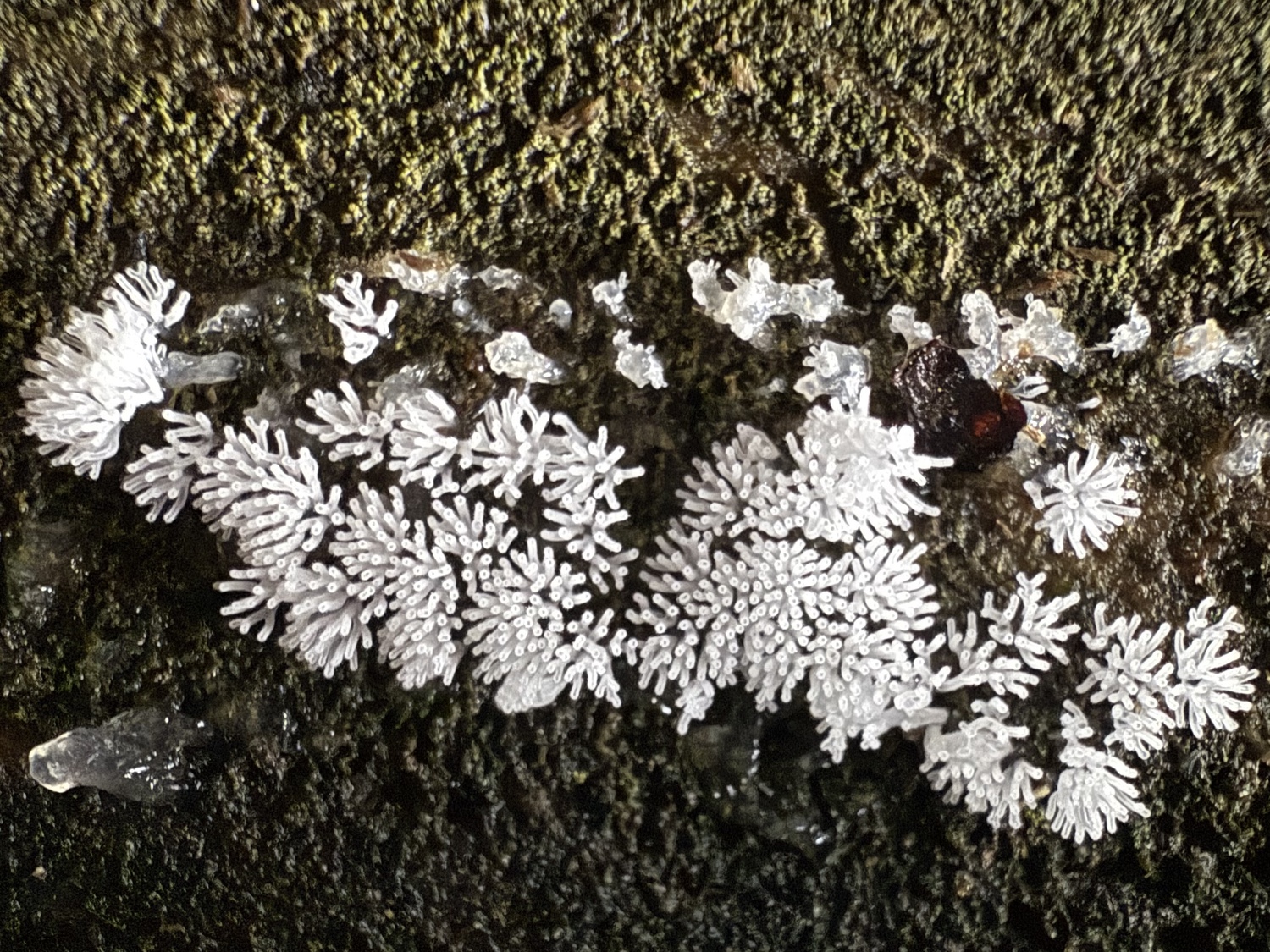
Unidentified
Fungi identification stills seems quite difficult to me, in part because I’m not always sure what I should be looking for. Even if you cannot identify them, some are still quite pretty.
I photographed this before I knew to also photograph the underside, which can often help narrow down the type of fungus. It looks like orange styrofoam.

References
Woehrel, M. L., and W. H. Light. 2017. Mushrooms of the Georgia Piedmont & Southern Appalachians. University of Georgia Press, Athens.